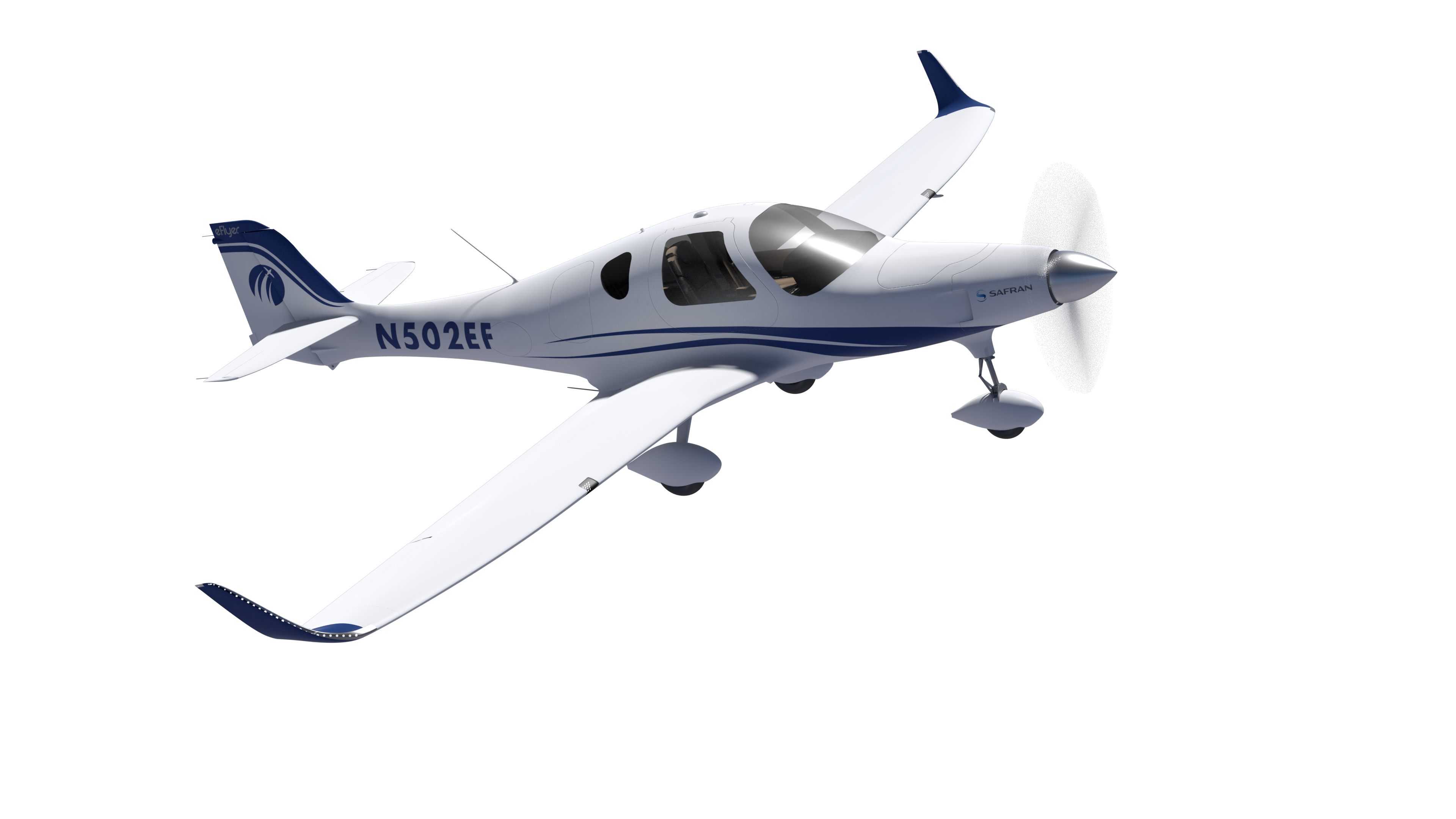Established in February 2014, the eFlyer program was created by Bye Aerospace to produce the two seat “eFlyer”, and for it to be fully certified under the new FAR 23 Amendment 64, and bring it to market. We intend to serve general aviation by providing a clean, renewable energy, electric training aircraft. As of November 2020 we have over 711 purchase deposits in our backlog, split evenly between the eFlyer 2 and eFlyer 4. Check out the video of the eFlyer 2 prototype in flight below.
Electric Training Aircraft
This two-seat aircraft will change the way pilots train. The cost-efficient aircraft will enable new pilots to train without prohibitive fuel costs.
eFlyer Pricing
For more information on pricing, email: sales@byeaerospace.com
The eFlyer Family design:


eFlyer 2 Specs*
- eFlyer 2™ was the world’s first FAA 14 CFR Part 23-Type Amendment 64-Certified Applicant for a “Normal Category” Electric Aircraft, (FAA application filed April 13, 2018)
- The eFlyer design is entirely new, from nose to tail
- Aerodynamic efficiency is over twice that of a typical legacy aircraft of similar size
- High overall propulsive system efficiency (high motor efficiency with low cooling drag)
|
Component |
Supplier |
Description |
|
Electric motor |
Safran |
ENGINeUS TM 100 (air cooled) 110 kW (150HP) max rating |
|
Batteries |
To be announced |
High density lithium battery |
|
Structures |
To be announced |
Toray carbon composite system |
|
Parachute Recovery System |
ASR |
Soteria whole-aircraft emergency recovery parachute system |
|
Avionics |
Garmin |
G500 TXi |
|
Cabin Width |
46 inches |
|
Crew (instructor and pilot trainee) |
450 lbs payload |
|
Rate of Climb |
1,200 fpm |
|
Normal Speeds |
55 knots to 135 knots |
|
Range at 96 knots, 10,000 feet |
220 nm with VFR reserves |
|
Economy Cruise |
96 KTAS, 10,000 feet |
|
Flight Endurance |
3 hours (at 73 knots) |
|
Stall Speed |
48 knots |
|
Maximum Altitude |
14,000 feet |
|
Current Base Price 2021 (Subject to change) |
$489,000 – eFlyer 2
|
Note: Performance metrics are projections only and subject to change.
*The information presented is designed to acquaint the reader with the eFlyer characteristics. For many reasons, including the continuous review and development of the aircraft, the information presented in this document may be incomplete and may be superseded without notice.
eFlyer Market
Until the Covid-19 pandemic, demand for new airline pilots around the world had increased dramatically over requirements from 5 or 10 years ago. Due to the coronavirus impact on airline transportation, we believe this demand will be temporarily reduced for the next two to three years. However, over a longer 20-year timeframe, according to industry forecasts, an estimated 763,000 new commercial and airline pilots are needed. This requirement is over 4.5 times increase of the 165,000 airline pilots flying today.
Due to the age and operating expense of the fleet, the existing 230,000-unit General Aviation fleet is ripe for replacement. The majority of these aircraft were manufactured between 1960 and 1983 when production averaged over 10,000 units per year. Sales slumped in the early 1980’s due to market saturation, rising fuel costs and limited access to capital with high interest rates. According to the FAA and GAMA, in the U.S. there are approximately 11,000 trainers in use today that average 48-years old. These old, legacy aircraft are difficult and costly to maintain, burn expensive leaded aviation gasoline producing CO2, and are nearing obsolescence. With great operating cost and performance benefits, the all-electric eFlyer 2 and eFlyer 4 are designed to be ideal replacements for much of the General Aviation fleet.
